Strategies & prevention techniques for how to stop foot pain from standing all day
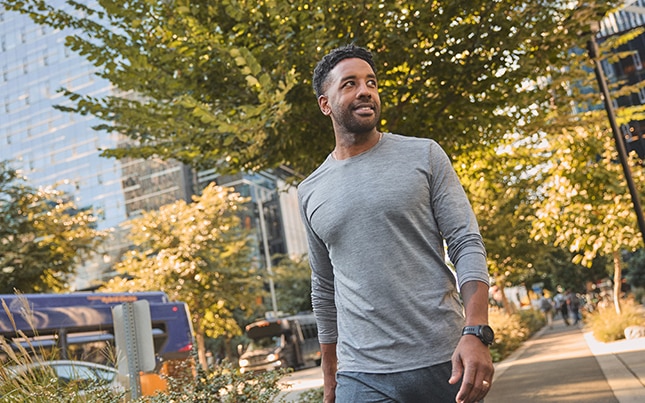
Anyone in a profession that requires prolonged standing, such as healthcare workers, teachers, retail employees, warehouse staff, and more knows the pain of aching feet after a long shift. Luckily, choosing quality work shoes for standing all day can make all the difference.
Since aching feet from standing can get worse over time and cause a number of other issues, it’s important to choose shoes that prioritize prevention. Brooks has a wide range of shoes designed with cushioning and comfort in mind, including the Glycerin 21 and Glycerin StealthFit 21. Read on to learn how the right shoes and the right exercises and stretches can help you avoid foot pain caused by prolonged standing.
Jump to section:
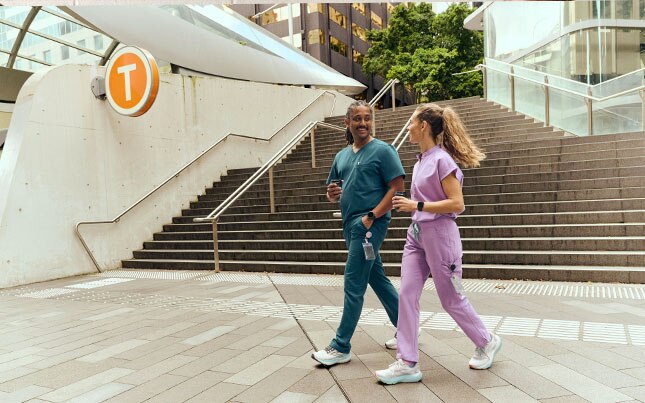
Common physical issues from prolonged standing
Standing for long periods of time day after day can take a toll on your muscles and joints. Depending on the demands of your job, it might not be possible to take as many breaks as you’d like, which can mean physical aches and pains such as:
Back pain
Maintaining proper posture for hours at a time can be difficult. As you get tired, you may start to hunch or arch your back, and certain muscles will begin to compensate for others. Without proper rest, the pain can build up and spread to other parts of your body.
Sore feet
As the pressure on your feet builds, pain in the heels and balls of your feet will become more noticeable. Without the proper cushioning to distribute weight evenly, aching feet from standing all day could lead to more ongoing issues like repetitive strain, stress, or overuse injuries.
Swollen legs
Standing for a long time means gravity is pushing more blood into your lower limbs. Varicose veins, which are blue or purple swollen, twisted blood vessels just under the skin’s surface, might pop up due to the increasing pressure. Not only are they unsightly, but they can lead to more serious issues like blood clots.
Knee & hip pain
Joint pain is common for people who spend a lot of time on their feet. Your knees and hips are withstanding a lot of pressure and may even seize up and become temporarily immobilized due to pain and fatigue.
Ergonomic strategies for better posture
Ergonomics studies recommend strategies, tools, and healthy habits that reduce strain on the body and help avoid overuse injuries. If you have a job where prolonged standing can’t be avoided, keep these tips in mind to incorporate into your days:
- Take movement breaks: The longer you stand in the exact same position, the more muscle fatigue will catch up with you. Try to fit in regular walks and stretches to keep your muscles warm and loose instead of letting them stiffen up.
- Perfect your posture: Make a point to engage your core, distribute your weight evenly through both legs and avoid slouching. Check in with your posture every once in a while to make adjustments as necessary.
- Configure your standing desk: If you use a standing desk, make sure it’s set up to your unique needs. When typing or using your mouse, your elbows should be bent at a 90-degree angle, your neck neutral, and your wrists straight in front of you. Adjust the height of your standing desk to align your forearms parallel with the desk surface.
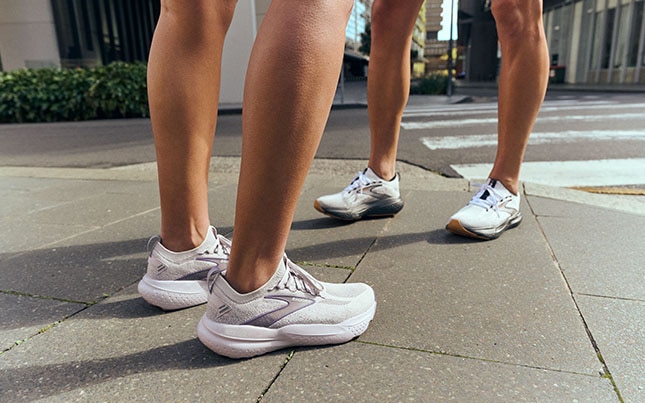
Exercises to strengthen key muscles for prolonged standing
It’s no secret that regular exercise can do wonders for avoiding chronic pain. If you spend a lot of time standing, working on conditioning and building muscles to improve your strength and endurance can help. Try focusing on a few key areas, such as:
- Core: A strong core is the key to supporting your lower back and avoiding pain. Try adding planks for your abs and bridges for your glutes. Runners know the importance of core strength, so it makes sense that the same core exercises that benefit runners extend to standing and walking as well.
- Legs: Calf raises and squats can help strengthen your leg muscles, so you’re prepared to stand for long periods of time. Try adding a variety of leg exercises to your routine to start building up overall stability.
- Feet: Didn’t know you could strengthen the muscles in your feet? Arch lifts and toe curls are a great way to target foot muscles and make sure they can support you no matter what.
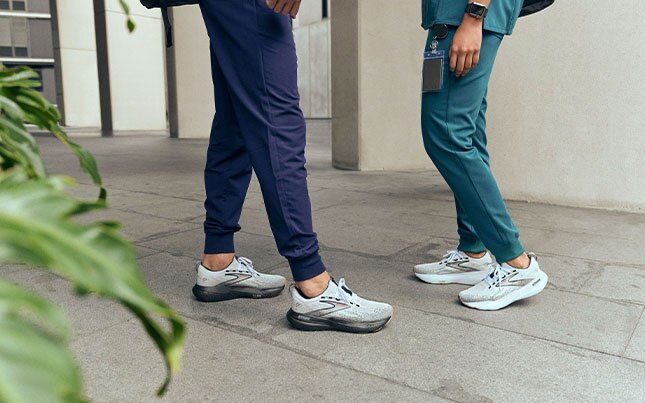
Stretches to alleviate aching feet from standing all day
In addition to exercise, stretches are the perfect way to keep your muscles loose and flexible. Whether you’re already experiencing pain, or you want to prevent it, a few key stretches can help, such as:
- Lower back stretches: Child’s pose and cat-cow stretches are both gentle yet effective ways to stretch your lower back and relieve tension from a day of standing. Targeting your glutes with a lying or sitting figure four stretch can also help relieve low back stiffness.
- Leg and foot stretches: Tight hamstrings can lead to back problems, so regularly stretching those muscles can help you maintain mobility and keep pain at bay. To maintain balance, don’t forget to target your calves, ankles, feet, and hip flexors.
- Full-body stretches: Every part of your body is interconnected, so dynamic stretches like arm circles, leg swings, and downward dog can help overall flexibility.
How to stop foot pain with supportive footwear
If you’re experiencing aching feet from standing all day, it may be time to take a closer look at your choice of footwear. Supportive shoes like the Brooks Glycerin 21 and Glycerin StealthFit 21 can improve posture and comfort by providing:
- Arch support: Built-in arch support is designed to help maintain the natural shape of the foot arch. This can prevent overpronation (rolling inward) or supination (rolling outward) of the foot, which can lead to poor posture and discomfort.
- Cushioning: Adequate cushioning in the insole and midsole helps absorb shock and reduce pressure on the feet. This cushioning can provide comfort and reduce fatigue, allowing for better posture throughout the day.
- Stability: Shoes designed to provide stability and support to the feet and ankles can help prevent excessive movement or rolling of the feet, which can impact posture. By providing a stable base, supportive shoes can help maintain proper alignment of the body.
- Alignment: Features such as a heel counter and a supportive midsole promote proper alignment of the body. By encouraging correct alignment of the feet, ankles, and legs, supportive shoes can help improve overall posture and reduce strain on the body.
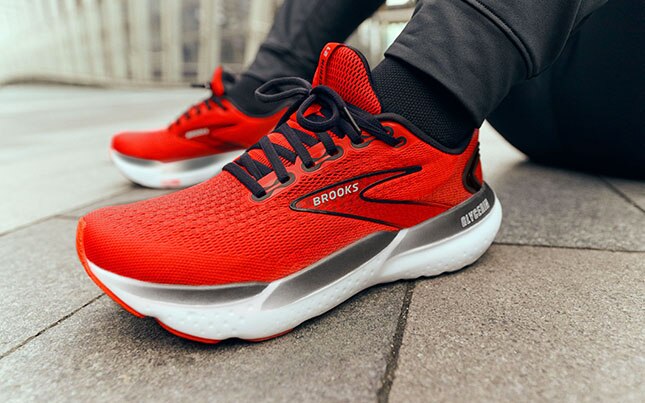
Glycerin 21 and Glycerin StealthFit 21: The best shoes for standing all
The Glycerin 21 and Glycerin StealthFit 21 from Brooks are both designed with soft cushioning to provide ease and maximize comfort with every step. Add a roomy fit and neutral support to the mix, and the Glycerin 21 line is perfect for anyone who spends a lot of time on their feet, either for work or for play.
These shoes support you every step with DNA LOFT v3 technology, using nitrogen-infused cushioning created with a large-cell foaming process. Large cells amplify cushion properties for a softer step, lightweight feel, and responsive toe-offs. This helps protect the body from impact and supports joints through hours of standing and walking. Choose the best fit your stride, whether you go for the classic feel of the Glycerin 21 or prefer the light and sleek Glycerin StealthFit 21 with extra stretch.
Combine preventative exercises and stretches with healthy habits and supportive shoes like the Glycerin 21 and Glycerin StealthFit 21, and you can say goodbye to chronic foot pain caused by standing all day.
Shop this article
This is a carousel. Use next and Previous buttons to navigate.
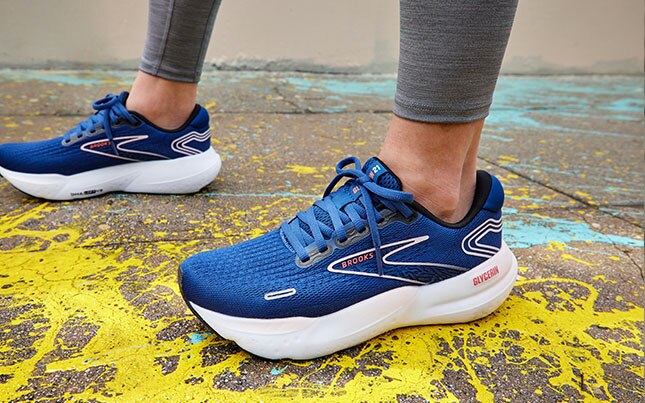
Disclaimer: Our writer's advice is intended for informational or general educational purposes only. We always encourage you to speak with your physician or healthcare provider before making any adjustments to your running, nutrition, or fitness routines.
